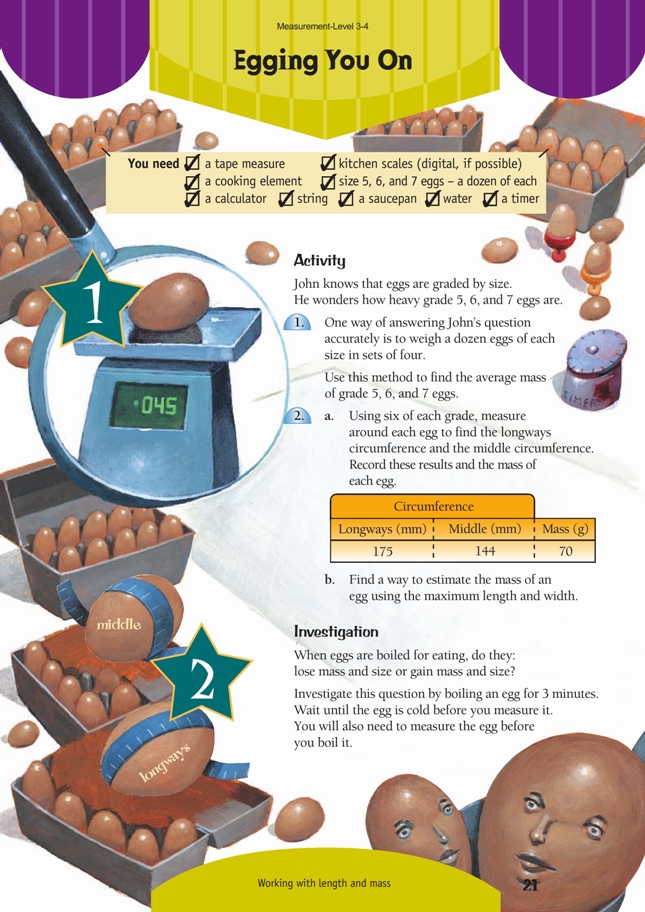This is a level 4 measurement activity from the Figure it Out series.
A PDF of the student activity is included.
Click on the image to enlarge it. Click again to close. Download PDF (340 KB)
measure lengths
measure masses
kitchen scales (digital, if possible)
cooking element
size 5, 6, and 7 eggs - a dozen of each
FIO, Level 3-4, Measurement, Egging You On, page 21
calculator, string, saucepan, water, timer
The graded size of an egg is determined by its mass, but of course the larger the egg, the more it should weigh. Question 1 suggests weighing four eggs at a time as a practical way of handling a dozen eggs, rather than weighing one egg at a time. The students will need to find the average mass by dividing by four.
Egg cartons have the minimum net mass stamped on them. A dozen grade 7s has a minimum net mass of 744 grams. The average is therefore 62 grams. The students could compare their average to the minimum net average stated on the carton.
Question 2 explores the relationship of size to mass by looking at the circumferences longways and around the middle. There is not a correct answer to question 2b. The students can hypothesise possible ways to come up with a technique to estimate mass from this data.
Have the students work in problem-solving groups of four to suggest at least two ways that might be used to estimate the mass. (Some ways are suggested in the Answers.) Encourage the students to use a calculator.
Investigation
Ensure that there are sensible safety precautions so that the students do not handle hot eggs or boiling water.
The conclusions that the students make in this investigation will depend on the accuracy of the measuring instruments available. Finding a correct answer is not important – it is the reasoning they use to justify the conclusions and the measuring skills they display that are of interest.
Some students may measure a number of eggs before and after boiling to give a better chance of seeing whether there is a difference.
Answers to Activity
1. Practical activity. The recommended mass ranges used by most poultry farmers are:
Grade 5: 43–53 g
Grade 6: 53–62 g
Grade 7: 62–71 g
Note: A 53 g egg can go in grade 5 or in grade 6, and a 62 g egg can go in grade 6 or in grade 7.
2. a. Practical activity. Results will vary.
b. Practical activity. Answers will vary.
Possible ways are:
- divide the middle circumference by 2
- add the longways and the middle circumferences and divide this by 4.5
- multiply the longways and the middle circumferences and then divide by 360.
Investigation
Practical activity. Results will vary.
